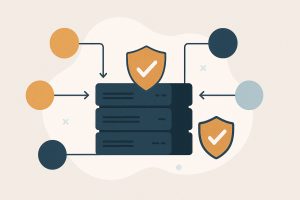
Building a Strong Foundation for Monitoring
Monitoring Spagic integrations is not just about detecting problems when they happen. It’s about creating a smooth and reliable environment where integrations work as expected. When systems work together across different platforms, a small failure in one place can ripple out and cause bigger problems elsewhere. That’s why planning your monitoring from the start is so important.
Having monitoring tools in place helps teams see real-time health updates and spot small glitches before they become bigger disruptions. It’s much easier to handle a slow-running service or a stuck transaction early on than to fix a full breakdown later. Monitoring makes it possible to act quickly with confidence.
By setting up good monitoring practices around Spagic, businesses can save time, reduce downtime, and deliver a better experience for their users and partners.
Choosing the Right Tools for Your Spagic Setup
Not every tool fits every project, and choosing the right monitoring solution for Spagic integrations is a critical first step. Some teams prefer built-in monitoring if it’s available, while others might want to integrate external platforms that provide more detailed tracking and alerting options.
Simple setups might work well with basic dashboard tools that give status updates at a glance. Larger or more complex integrations often need deeper monitoring options that include event logging, performance tracing, and detailed error tracking.
The important thing is to pick a tool that fits the scale of the integrations being monitored. Starting simple and expanding when needed helps avoid spending too much effort on complicated tools before they’re necessary.
Setting Baselines for Normal Performance
It’s hard to know when something is wrong if you don’t know what “normal” looks like. Setting clear performance baselines early on helps monitoring systems recognize when something unusual happens.
For Spagic integrations, this might mean tracking the average number of messages processed, the typical processing time, or the regular number of errors encountered under normal conditions. These baselines act like a health profile for the system.
Once these baselines are in place, it becomes easier to set up useful alerts that only trigger when performance falls outside the expected range, reducing the chances of getting flooded with unnecessary warnings.
Monitoring Key Integration Points
Spagic integrations often connect several systems together. Each point where two systems meet can become a place where problems show up. Watching these connection points carefully is one of the best ways to catch issues early.
This means monitoring for things like failed message deliveries, missed schedules, or unexpected error responses. It’s important to pay attention not just to the overall system health, but also to these individual connections.
Even if the rest of the system looks healthy, a problem in just one integration point can stop data from flowing correctly, leading to bigger issues down the road.
Setting Up Meaningful Alerts
Getting an alert every time something small happens can quickly lead to alert fatigue. It’s better to set up alerts that truly matter, focusing on changes that could impact users or business processes.
For Spagic integrations, meaningful alerts might include failures in critical data flows, sudden spikes in error rates, or slowdowns that could affect customer-facing services. Alerts should be clear, actionable, and sent through channels that the team monitors regularly.
Well-designed alerting means the team can act quickly when needed without getting overwhelmed by constant noise.
Logging for Visibility and Troubleshooting
Logs provide the detailed story behind what’s happening inside Spagic integrations. Good logging practices capture useful information without overwhelming storage or making important events hard to find.
Logs should include details like timestamps, identifiers for different transactions, and clear error messages. They should be easy to search so that if something unusual happens, the team can quickly trace it back to the source.
In many cases, the ability to look back at detailed logs is what turns a confusing outage into a simple fix.
Building Dashboards for Easy Monitoring
Dashboards offer a real-time window into system health. Instead of digging through raw data, teams can spot trends and issues at a glance. A well-designed dashboard for Spagic integrations might show things like current transaction rates, error counts, and system resource usage.
Having a live overview helps teams respond faster to issues and gives confidence that everything is working properly. When a dashboard shows a sudden change, it can trigger deeper investigation before users are affected.
Dashboards also help during handovers between shifts, keeping everyone up to date without needing long explanations.
Testing Monitoring Setups Before Going Live
Testing monitoring setups is just as important as testing the integrations themselves. Before going live, it’s good practice to simulate common problems—like a temporary network outage or a failed transaction—and watch how the monitoring systems respond.
This kind of testing helps make sure alerts fire as expected and dashboards reflect the real situation. It also gives the team practice in responding to real-world problems quickly.
Catching gaps in monitoring before users experience any real problems is one of the smartest moves a project team can make.
Planning for Growth and Changes
Systems grow and change over time. New integrations get added, workloads increase, and priorities shift. A good monitoring setup needs to grow along with the system.
For Spagic integrations, this means keeping an eye on whether new components are being monitored correctly and adjusting baselines and alerts as usage patterns change. Without regular reviews, monitoring setups can fall out of sync with reality.
A living, flexible monitoring plan keeps the system well-protected even as it evolves.
Keeping Monitoring Simple and Useful
At the heart of good monitoring is a simple idea: provide useful information without adding unnecessary complexity. When setting up monitoring for Spagic integrations, it’s better to start small and build carefully.
Clear dashboards, helpful logs, and meaningful alerts keep the team informed without overwhelming them. Every tool and report should serve a real need, not just add extra noise.
When monitoring stays focused on real user and business needs, it becomes a powerful tool for keeping integrations running smoothly.

